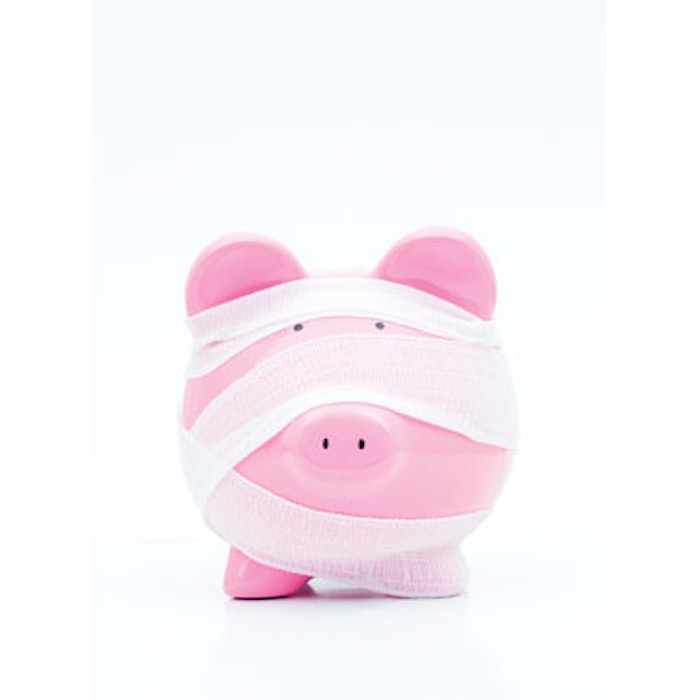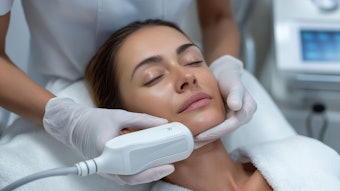
Building and maintaining a successful aesthetic practice requires more than a steady stream of patients. If your services are not priced correctly, no amount of volume will help improve revenue shortfalls. When setting the price for a medical procedure, there are several factors to consider, including your costs to offer the treatment, your desired income and your local competitors.
Determining Your Costs
The first step in setting a price for each treatment is ascertaining both the direct and indirect costs associated with that procedure. Svetlana M. Danovich, MD, plastic surgeon and founder of SD Medical Arts in New York City, starts by adding up the direct costs of the procedure, which include the cost for any medical devices or materials used; personnel cost (hourly); anesthesia; and ancillary products, such as linens. Then she adds in the indirect costs, which include overhead (or facility) costs, such as rent, utilities, cleaning supplies, software, phones, marketing, etc.
The total direct and indirect costs will tell you the minimum you must charge not to lose money on the procedure. But you also want to make money. “When running any business, it is critical to determine all of these fixed costs before pricing anything,” says Denver-based plastic surgeon Gregory A. Buford, MD, FACS, author of Beauty by Buford. “From there, you can then determine the value of your time and the profit margin necessary to properly achieve that value.”
When factoring in a profit margin, many physicians are afraid to charge too much—but in doing so they undervalue their time and effort. “If you feel your time is valuable, price your time accordingly,” says Dr. Buford.
Device Considerations
Lasers and energy-based devices have come to play a large role in aesthetic care and deserve special consideration when it comes to pricing. If you own your device outright, you can charge a little less for each procedure once the cost of the device has been repaid. “If you buy a device with cash, you must keep in mind that by paying for the device in full, you delegated funds that could have been used elsewhere,” says Dr. Buford. “As such, you need to establish a fair profit margin that factors this in.”
Lisa Jenks, MD, owner and medical director of Genesis MedSpa in Colorado Springs, Colorado, obtains loans to buy more expensive pieces of equipment. “I take the monthly payment on the loan into account when setting prices,” she says. “I prefer not to get loans through equipment companies because they tend to have higher interest rates than what I can get through a bank.”
In addition to the cost of the device, practices must also consider the cost of disposables per treatment and any required or recommended maintenance fees and contracts. Some devices, particularly those for face and body contouring, require consumables; in some cases, practices may be charged a usage fee every time the device is turned on in place of a lease or upfront payment for the equipment. All of these expenses must be taken into account when pricing these types of procedures.
Image copyright Getty Images
[pagebreak]
What Can Your Market Bear?
In addition to understanding all of the costs associated with each service you provide, it is important to understand your target patients’ income levels and what your local competitors are charging. If your fees are significantly higher than other aesthetic businesses in your area, patients will naturally gravitate toward the lower-priced competition. If you are charging significantly less, this can also drive patients away because they may suspect you are offering low quality treatment.
Dr. Buford enlists secret shoppers to stay abreast of competitor pricing, and he uses this information as a variable to determine how he sets his prices. “I never want to be at the bottom of the pricing scale, because many consumers think this suggests that you have little expertise or are providing an inferior product. But I am also careful not to price myself out of the market,” he says. “If I have considerable expertise in one area and feel that I am an expert in a procedure, I set my prices accordingly. Most consumers respect this and are skeptical about rock-bottom pricing, unless you explain why you are able to offer it.”
Physician experience and expertise do add to a patient’s perceived value of a service and should be taken into account as part of your pricing strategy. “If you provide a unique service, or are better trained and qualified in a certain area, that absolutely justifies charging a little more,” says Frank D. Cohen, MPA, MBB, director of analytics and business intelligence for DoctorsManagement, a medical and healthcare consulting firm with offices in Florida, North Carolina and Tennessee.
Dr. Jenks works with secret shoppers, and reviews advertisements in local newspapers and on local radio stations to learn how much her competitors are charging—and what kinds of specials they are offering—for similar services. Because her spa provides an upscale, indulgent experience that includes soft music, complimentary glasses of wine and flowers for each client, she also aims to charge slightly more than most of her competitors.
The majority of her clients are women over 40 who have disposable income. “They expect and appreciate a pampering environment and are willing to pay for the experience,” says Dr. Jenks. “However, we do offer some lower-priced services. For example, we have a program in which patients receive two acne treatments (e.g., peels or phototherapy) per month, so we’re able to treat quite a few young adults with acne who are on a budget.”
Consultant Cindy Graf commends this strategy. “Medical aesthetics is all about value and the experience—moreso than price,” she says. “The biggest mistake medspa owners tend to make is offering inexpensive services that do not have a lot of cross-selling ability. You cannot have a financially successful medical spa based on volume or low prices. Higher overhead procedures, such as Botox and body sculpting, should not be loss leaders in a menu of services; choose chemical peels or laser hair removal instead, as they have lower overhead. Those are good procedures to discount in order to attract clients.”
Package Pricing
Setting the right price for each procedure can get tricky when you start to look at bundling treatments or creating multi-session packages. These offers are attractive to patients because it allows them to save some money on the per-procedure cost. But you must make sure you don’t undercut your prices so low that you are not covering your costs.
For Dr. Buford, setting prices on package deals depends on the procedure being offered. “If it’s a new procedure, then I may administer the first treatment at no cost—but only with the purchase of a full package,” he says. He finds that this strategy is most effective with procedures that require more than one session, such as microneedling or intense pulsed light treatments.
Patients who purchase treatment packages at Genesis MedSpa typically get their final treatment at half price. The medspa also includes a product that will improve a procedure’s results with all packages, which adds value without undercutting prices. “Clients perceive and appreciate the extra value,” says Dr. Jenks.
Regarding discounts in general, both the patient and practitioner should benefit, notes Lisa Minyard, manager of the Thrive in Five program at Women’s Economic Ventures in Ventura, California. For example, if you’re trying to fill up time slots on slow days, offer an incentive to patients who book procedures on those days. “Make sure you aren’t going so low that you lessen the value of what you’re offering, and be sure you’re getting something in return for it,” she says. “If offering a combination of procedures in one session lowers the cost, then it makes sense to offer that combined treatment at a reduced rate.”
When to Raise or Lower Prices
In some cases—such as after you pay off a piece of equipment or a mortgage—costs may decrease. But typically costs go up over time. In addition, as your experience and expertise grows, you may find that you are able to charge more for your services. Therefore, it is important to re-evaluate your costs and prices from time to time.
When you reach a saturation point and cannot schedule patients for procedures in a timely manner, it is time to raise your prices, says Dr. Buford. If no one ever complains about your prices, Cohen says this also may be a sign that it’s time to raise them. Minyard recommends checking your competitors’ fees once a year, and then reevaluating your own menu. If you see a trend toward rising prices, it’s time to revisit your own pricing.
Conversely, if there are certain procedures that patients are not booking, you may want to consider reducing the price. “Remember, price may not be the reason patients aren’t lining up at your door,” says Minyard. “You also need to consider whether the procedure is right for your market.”
Dr. Jenks will only lower a price if clients consistently express interest in a procedure, but then decide not to book it due to the cost.
Along these same lines, Cohen encourages practitioners to listen to their patients. “If they complain a lot, it may be time to reexamine your pricing,” he says.
You work hard and you trained hard to be able to offer a high level of aesthetic care. By understanding your costs and patient base—and taking the time to assess your service menu and pricing—you can improve your bottom line and set your business on the road to sustained success and profitability.
Karen Appold is a freelance writer based in Pennsylvania.
Image copyright Getty Images.











